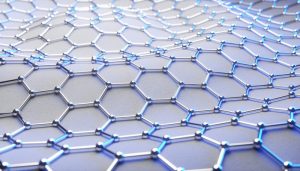
The textile and apparel industry will change dramatically over the next 10 years, according to a recent report. It will adopt new materials that deliver unprecedented performance and will eliminate harmful chemicals from its products and manufacturing processes. The industry will emerge as a circular and regenerative sector of the economy.
The ‘Safer Chemistry Innovation in the Textile and Apparel Industry’ report, formulated by Safer Made and commissioned by Fashion for Good, evaluates the role different chemicals of concern have in the production of textiles and apparel. It identifies five key innovation areas, offers insights into how to accelerate the adoption of new safer technologies, and highlights the work of over a hundred young innovative companies.
One of the best ways to eliminate hazardous chemicals is to develop new chemistry and materials that provide new or superior performance while being safer at the same time. Safer Made said in the report that it believes in focusing on the function delivered by chemicals of concern and seeking safer ways to deliver that function, rather than trying to find specific substitutes for the chemicals of concern.
By connecting functional aspects to the universe of potential solutions, the report defines five ‘innovation areas’— new materials, new safer chemistries, waterless processing, fibre recycling and supply chain information management tools.
Consumers enjoy more choices and power than ever before, and they are looking for brands and products that reflect their values. In response, retailers and brands are spending considerable resources to understand what chemicals and materials are present in their products, or have been used to manufacture them.
Brands are devoting significant resources to ensure the most hazardous materials are eliminated, while developing ways to incentivize the adoption of safer chemistry. Most brands start with lists of chemicals they want to eliminate from their products or manufacturing processes (also known as Restricted Substance Lists and Manufacturer Restricted Substance Lists) and are working with the supply chain partners to implement them, notes the report. Some brands are going further by implementing safer chemistry tools at the design phase, becoming active participants in the innovation ecosystem.
Bringing new safer technologies to market within the textile and apparel industry takes both collaboration and capital. Brands and retailers participate in the innovation ecosystem by: partnering with innovative companies to jointly develop and scale safer chemistry and materials; engaging with accelerators and incubators; and investing in innovative companies or venture capital funds.
“At Fashion for Good, our ambition is to reimagine the way fashion is designed, made, worn and reused. But this type of systemic change cannot happen in a bubble. An open innovation culture is crucial, and Safer Made’s report provides different stakeholders with valuable information to support them in the transition to only good fashion,” said Katrin Ley, Managing Director, Fashion for Good.


















